I was sitting in my circle of trees the other evening. The sun was low in the sky, not to be seen through all the layers of Pine trees. But I noticed that the tip-top of the tallest Aspen tree caught the twilight rays of the sun with a shining amber color. A slight breeze quivered the leaves in a soft song as the light faded away. So much of Nature is quiet and unassuming. She does her work without fanfare and most often without notice.
One of the places of Mother Nature that often goes unnoticed is the prairie. Travelers erroneously say ‘there’s nothing there’ or ‘it’s boring.’ I am a lover of prairies and will refute such talk. There is so much there! I am fortunate, not only to be surrounded by trees, but also to have a patch of prairie in the front yard. The soil is sandy and quickly dries, and whoever lives in my little prairie has to be tough. Quiet, unassuming grasses and wildflowers grow and thrive in the open, sunny spot.
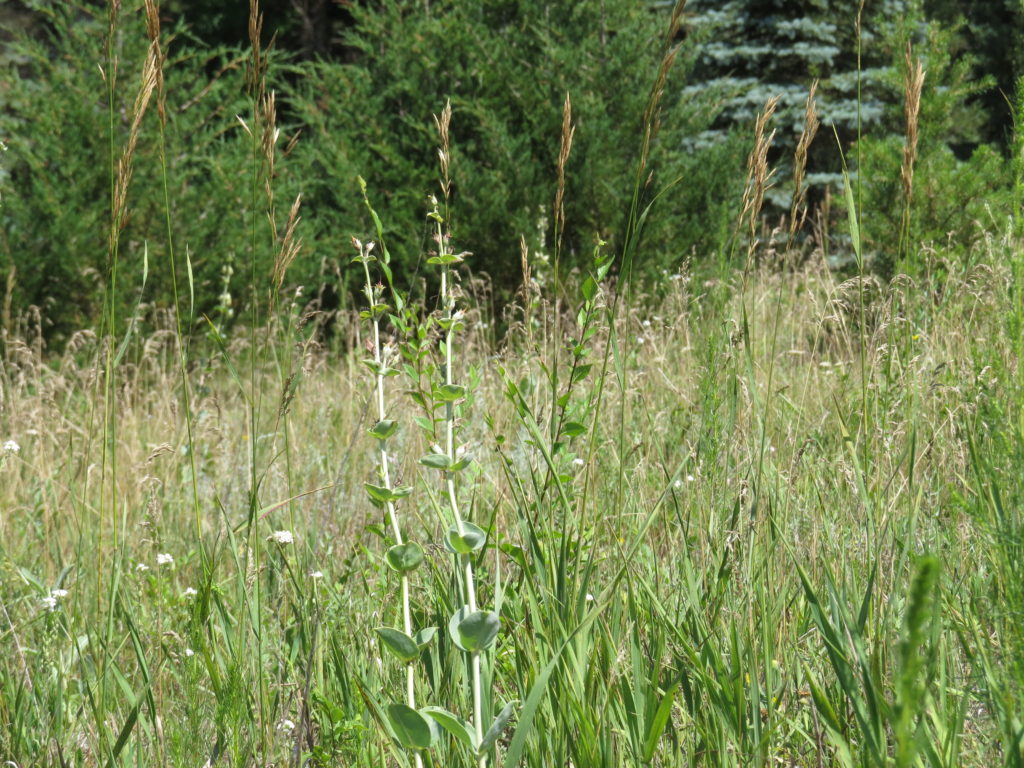
One June-blooming wildflower that does garner some attention with its bright yellow-orange clusters of flowers is Hoary Puccoon. The roots were used by Native Americans to make a red dye.
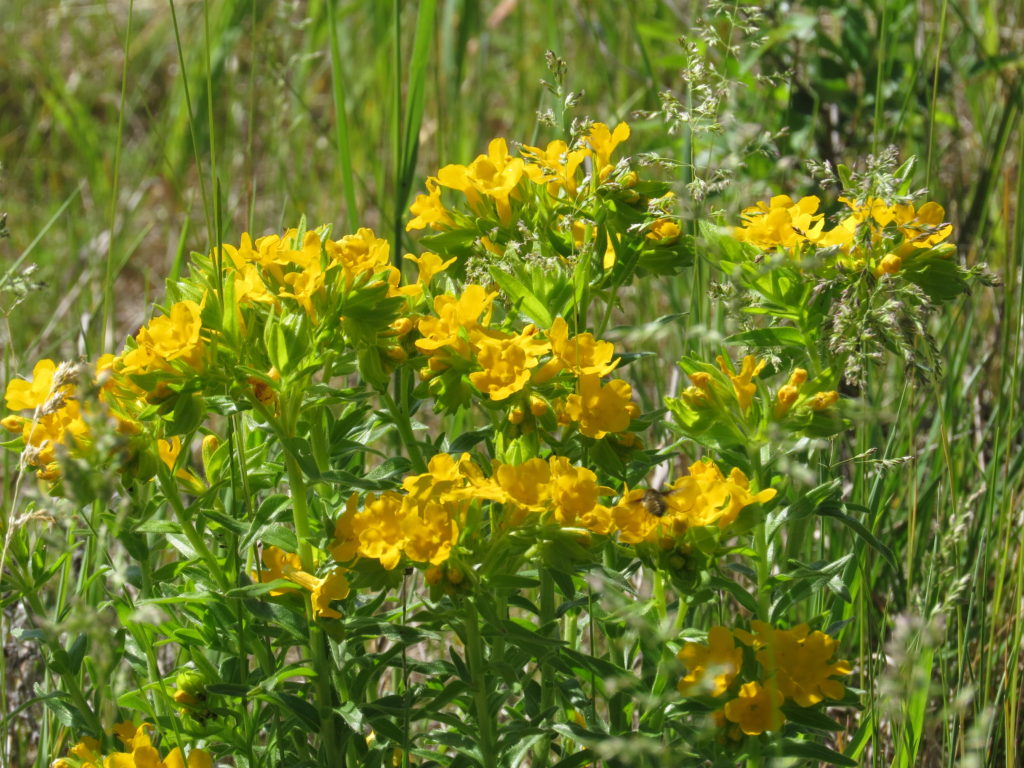
A common prairie flower, one of the early bloomers, is Prairie Smoke. The bell-shaped flowers hang down, but after pollination, the stems straighten up, and the seed heads of feathery plumes form.
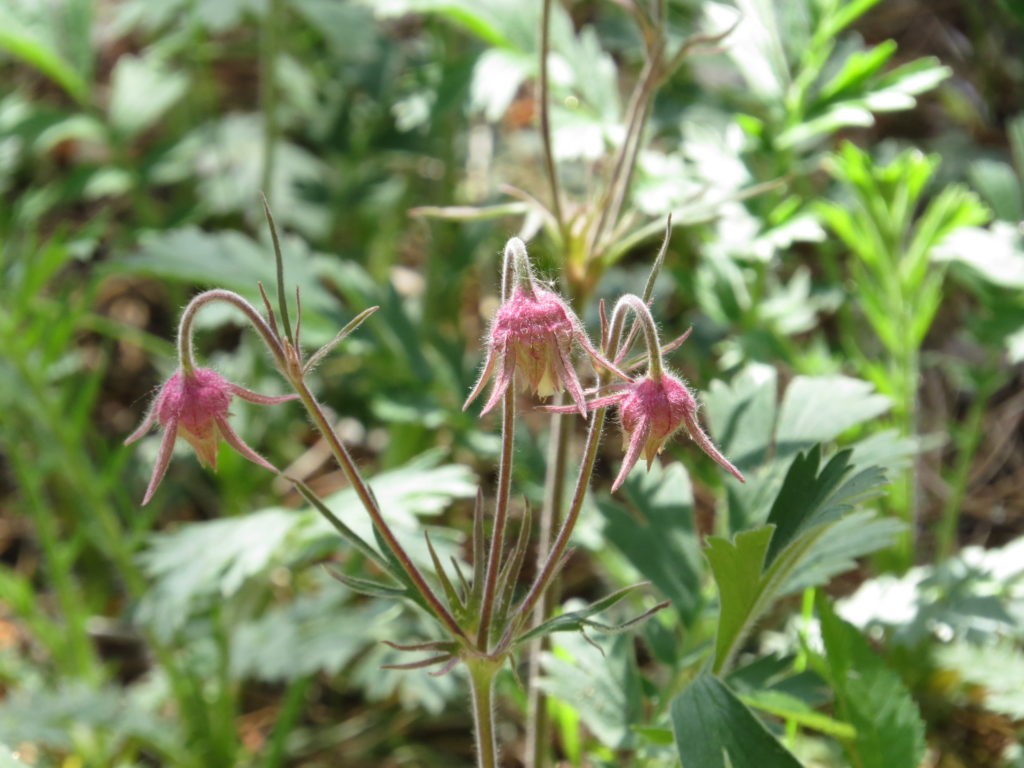
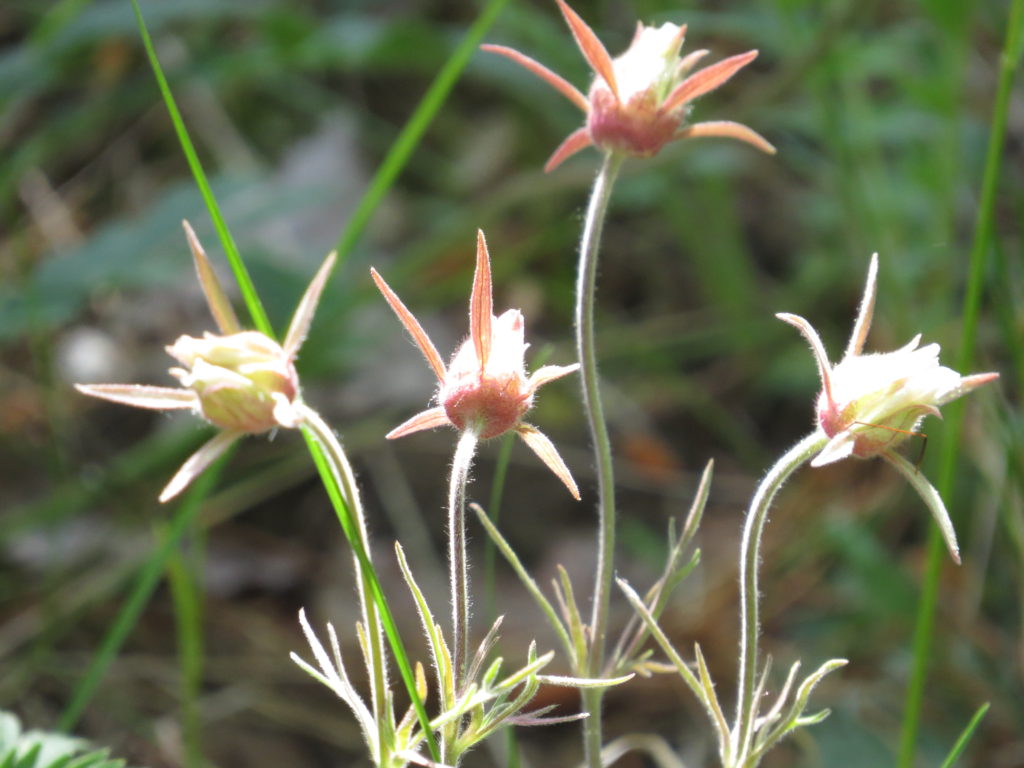
Pollinators are another quiet, most often unseen part of Nature that work hard and do important work. In essence, they provide the movement of male parts of the flower (pollen) to the female parts (stigma)—they help the process of fertilization so the fruits and seeds can develop. Pollinators include birds, bats, butterflies, moths, flies, beetles, and most importantly bees.
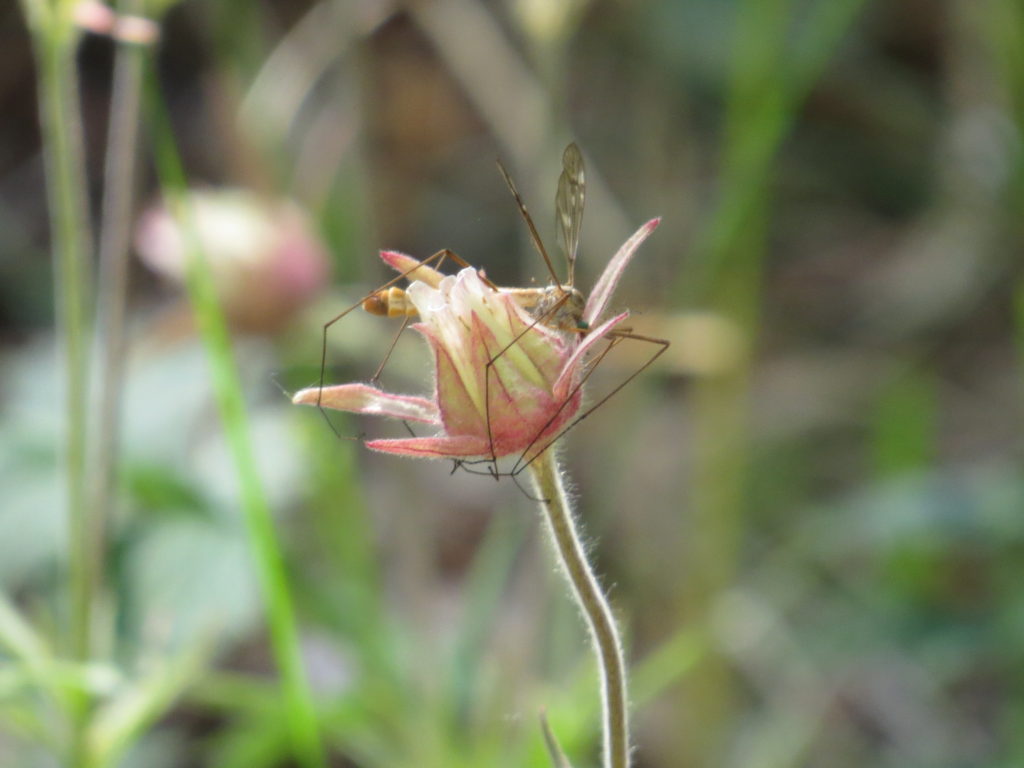
Another June-blooming wildflower in our little prairie is Shell Leaf Penstemon. Its large lavender flowers whorl around a single stalk above the opposite, clasping leaves that hold rainwater like a small shell.
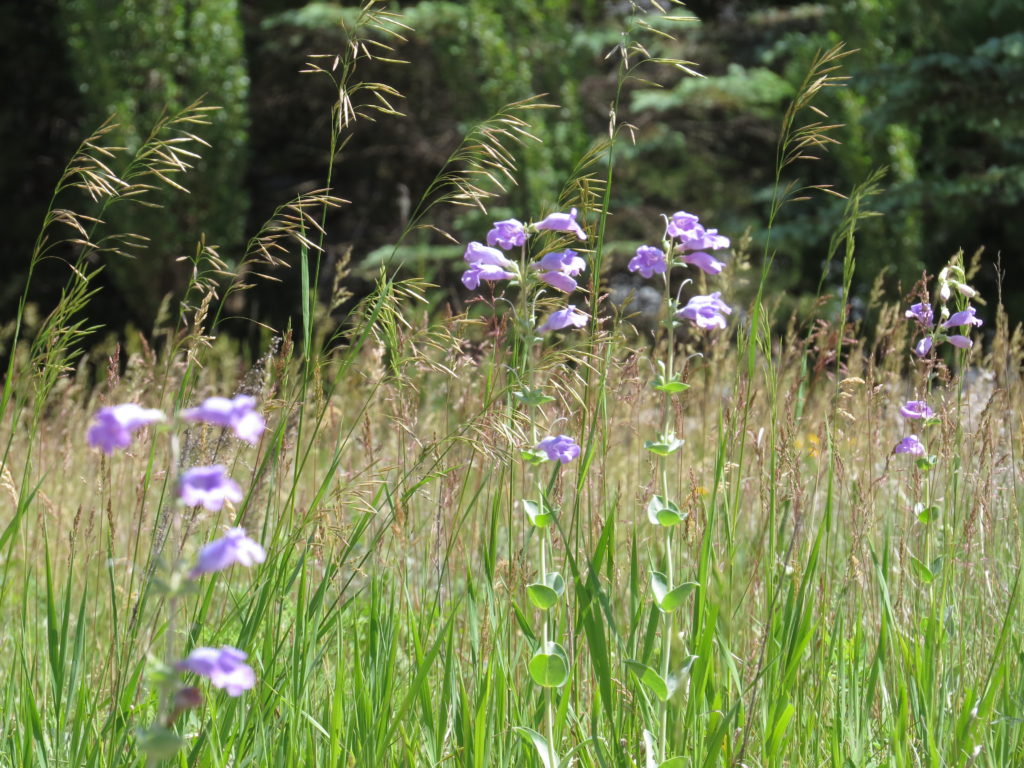
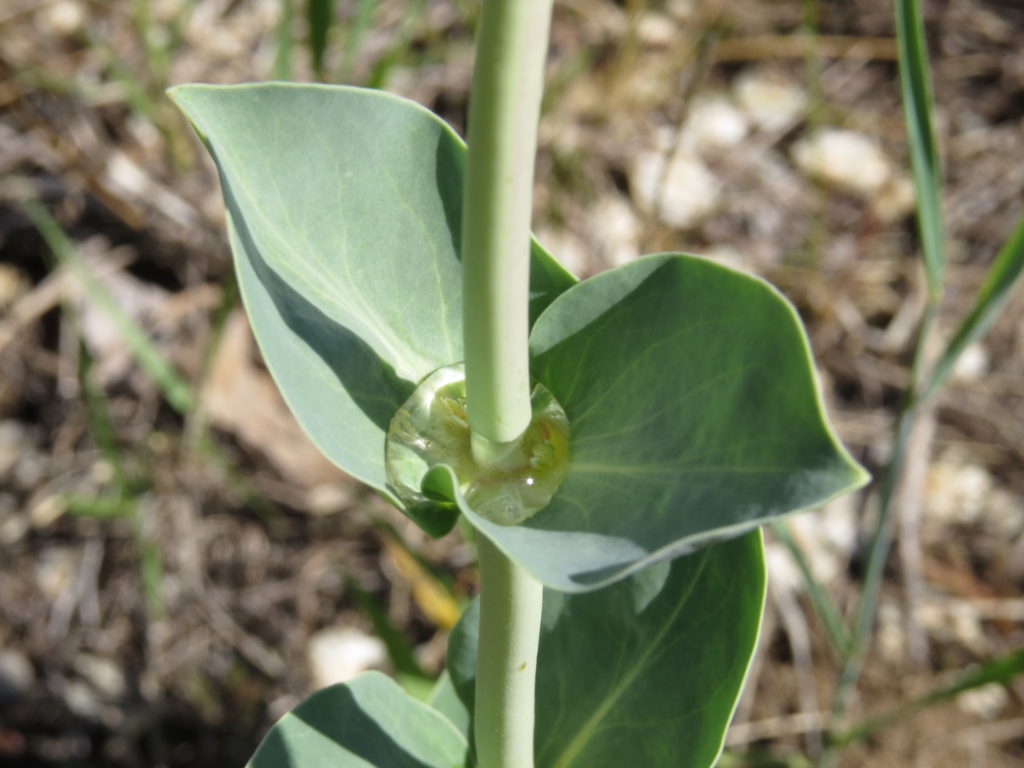
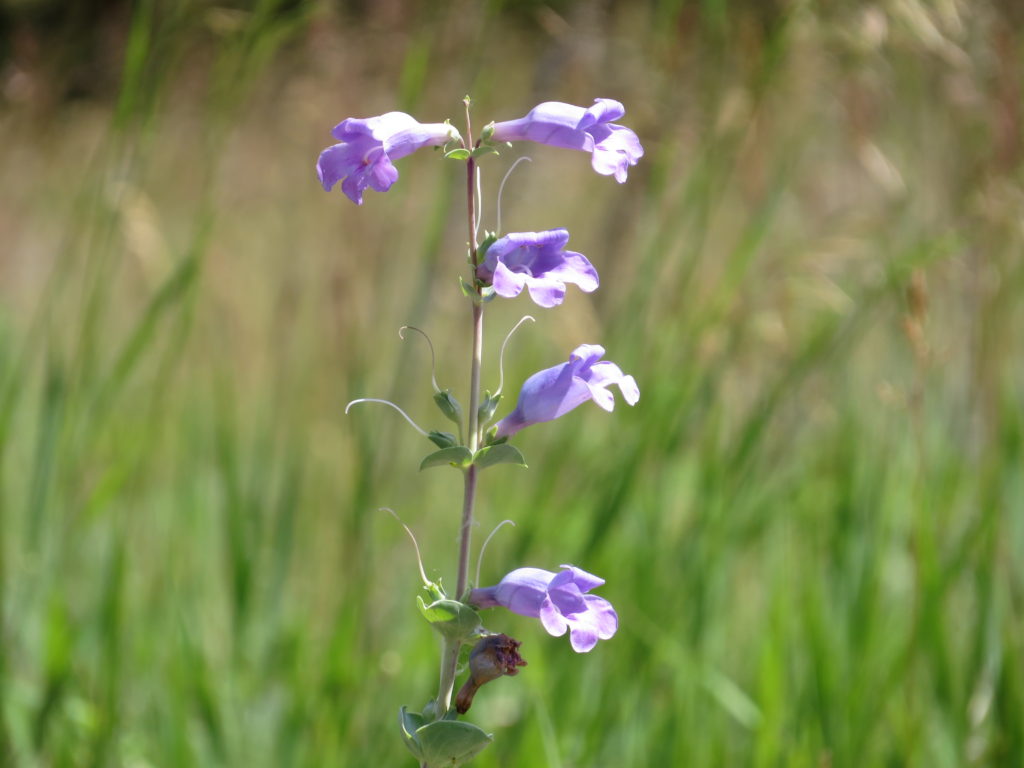
The flower tubes are large enough for bumblebees to crawl inside to perform their pollinator duties.
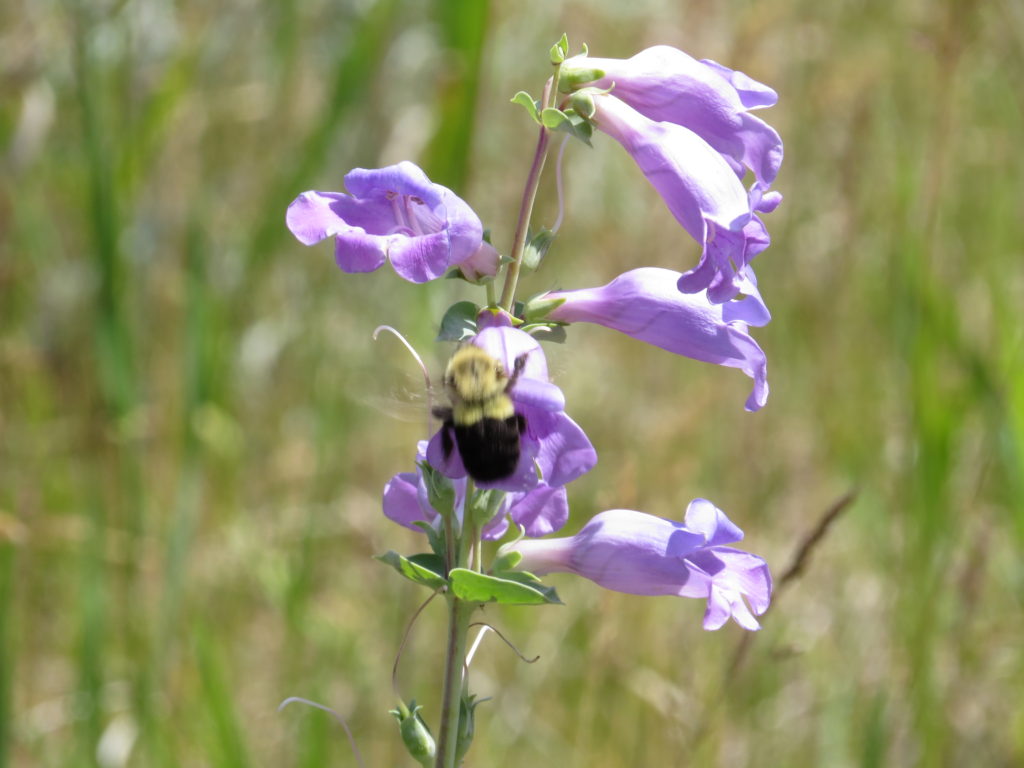
No prairie is complete without the tough, fragrant presence of Yarrow. The leaves are fern-like, as described by its species name, millefolium, meaning ‘thousand leaves.’ The flowers are flat-topped clusters of many tiny flowers, all ‘working’ together as one.
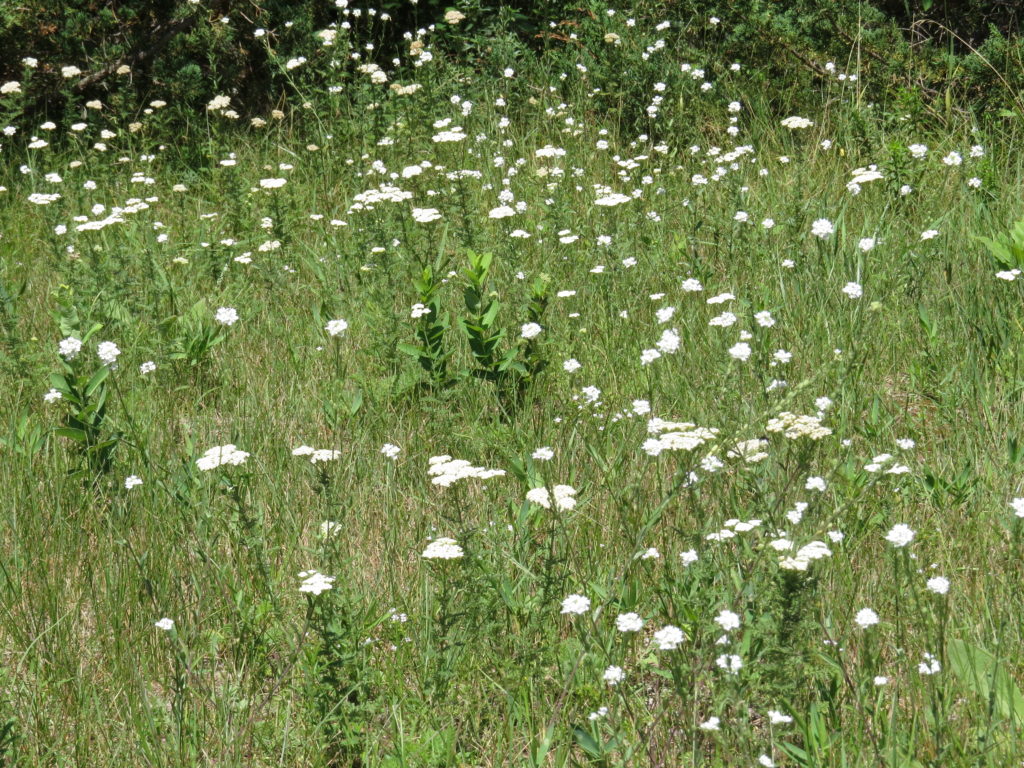
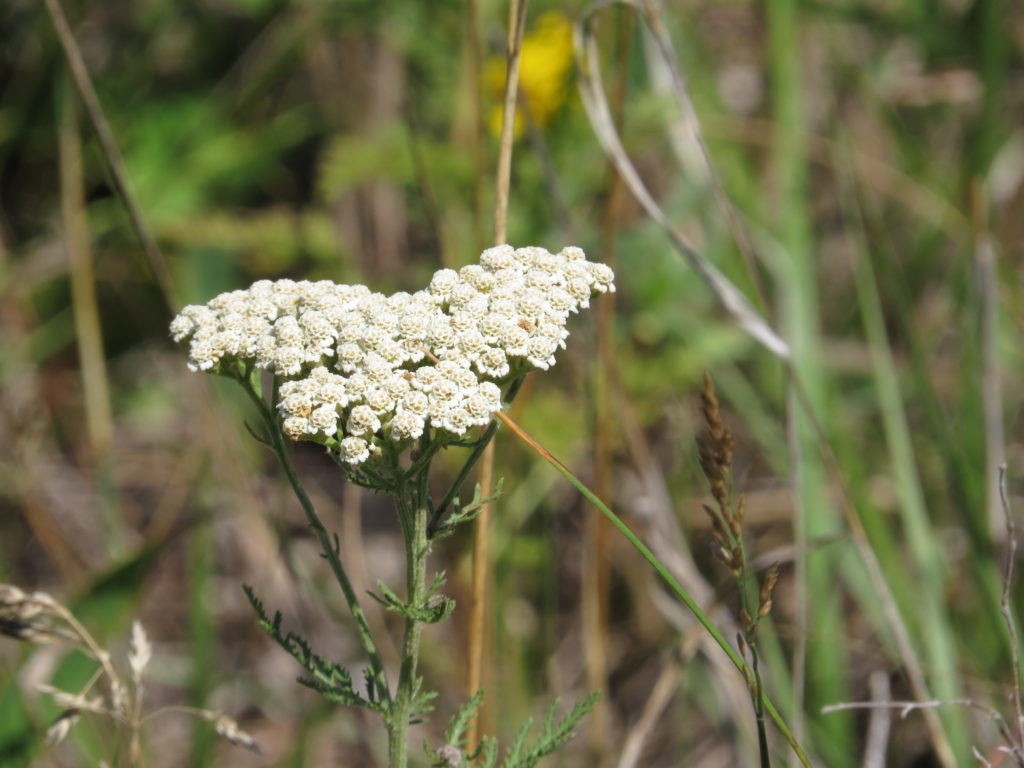
Evening Primroses do as their name says—bloom in the evenings! The stalk of flowers bloom from the bottom up, a few flowers at a time. They open in the evenings and wilt by noon of the next day. Sphinx moths pollinate them during the night, but I also see a small bee on one of the flowers.
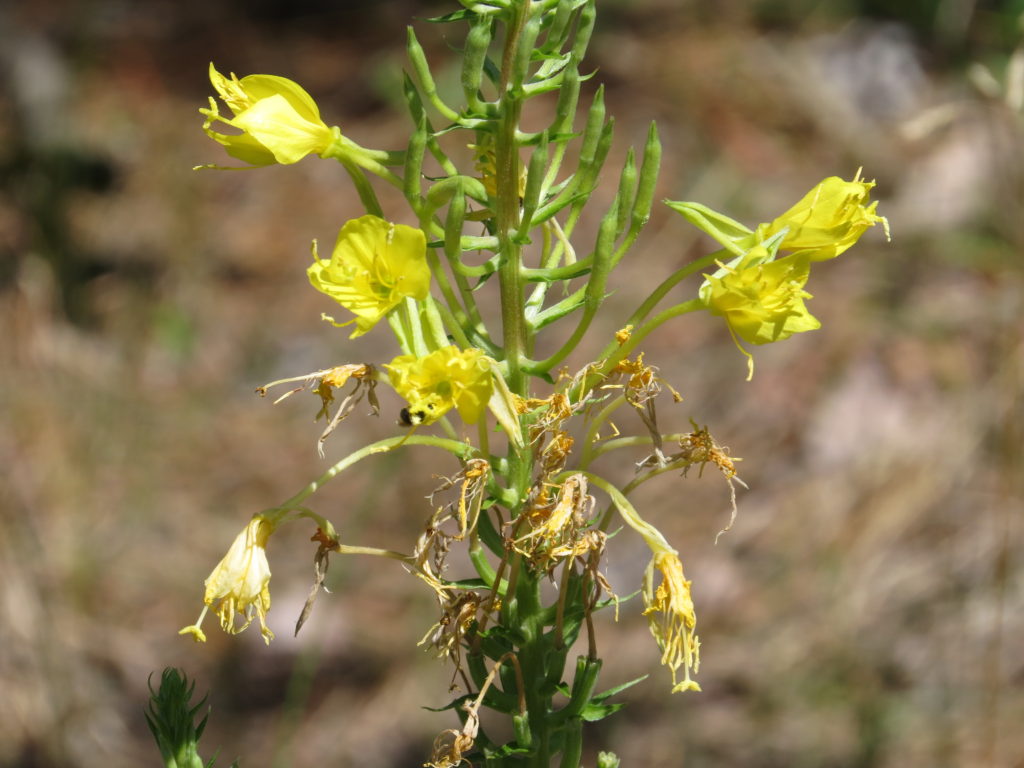
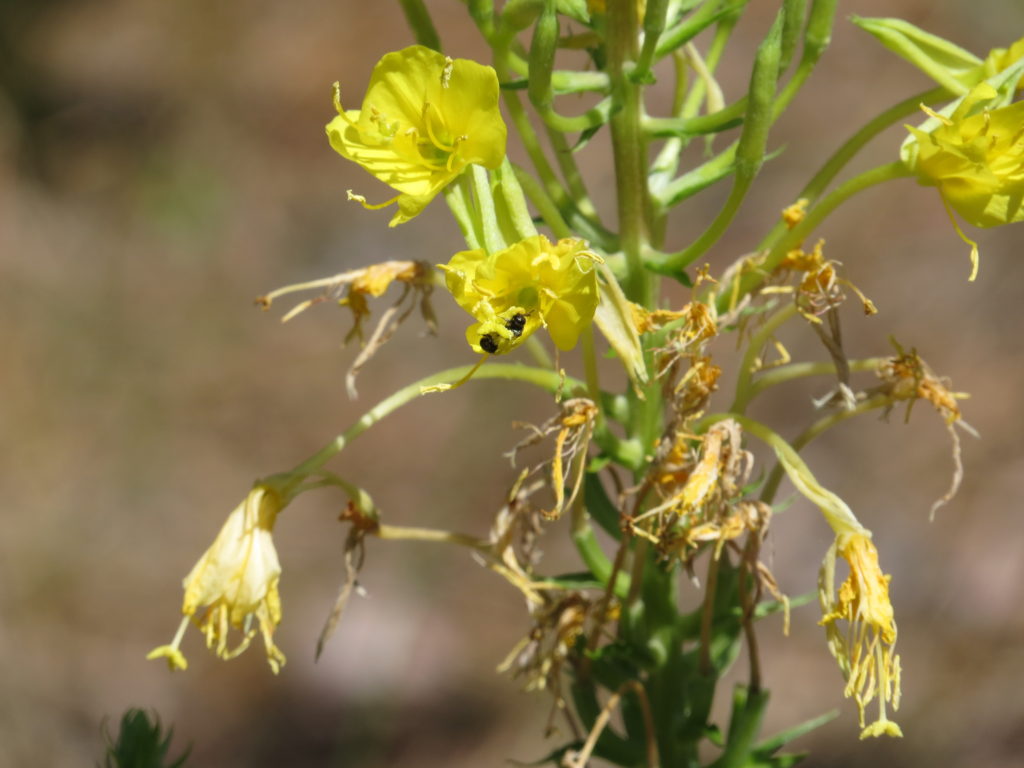
Daisy Fleabane is another self-described name. It was used by pioneers in their beds to keep away fleas. The radiant daisy-like flowers (actually asters) bloom from Spring to Fall on leafless flower stems.
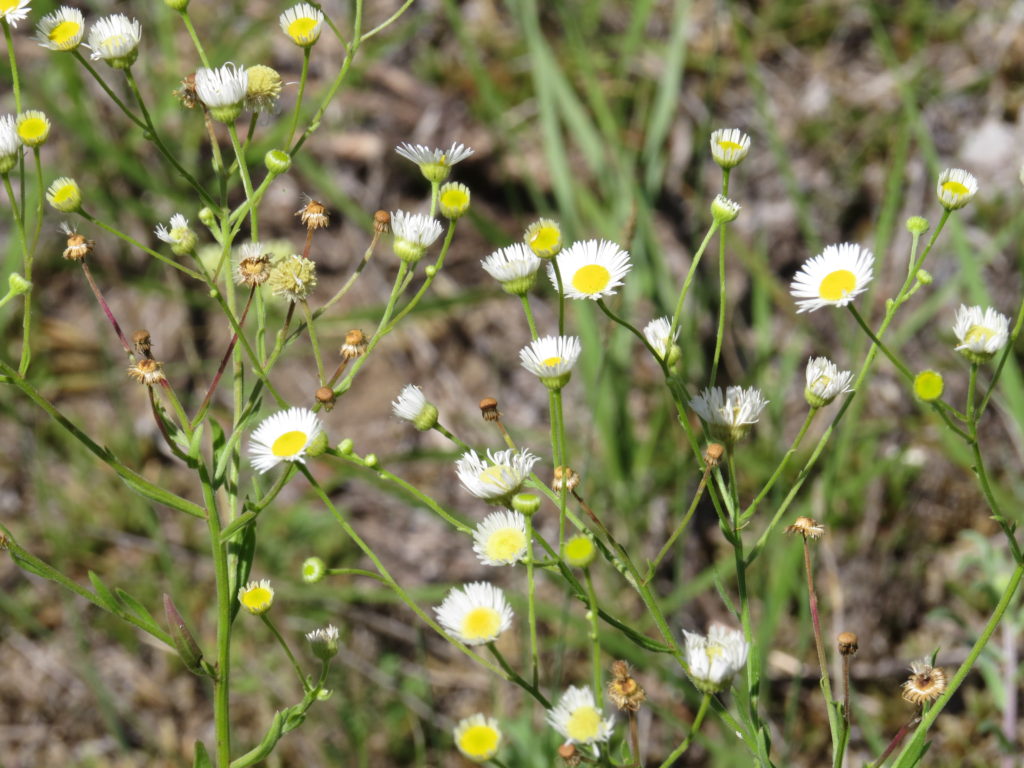
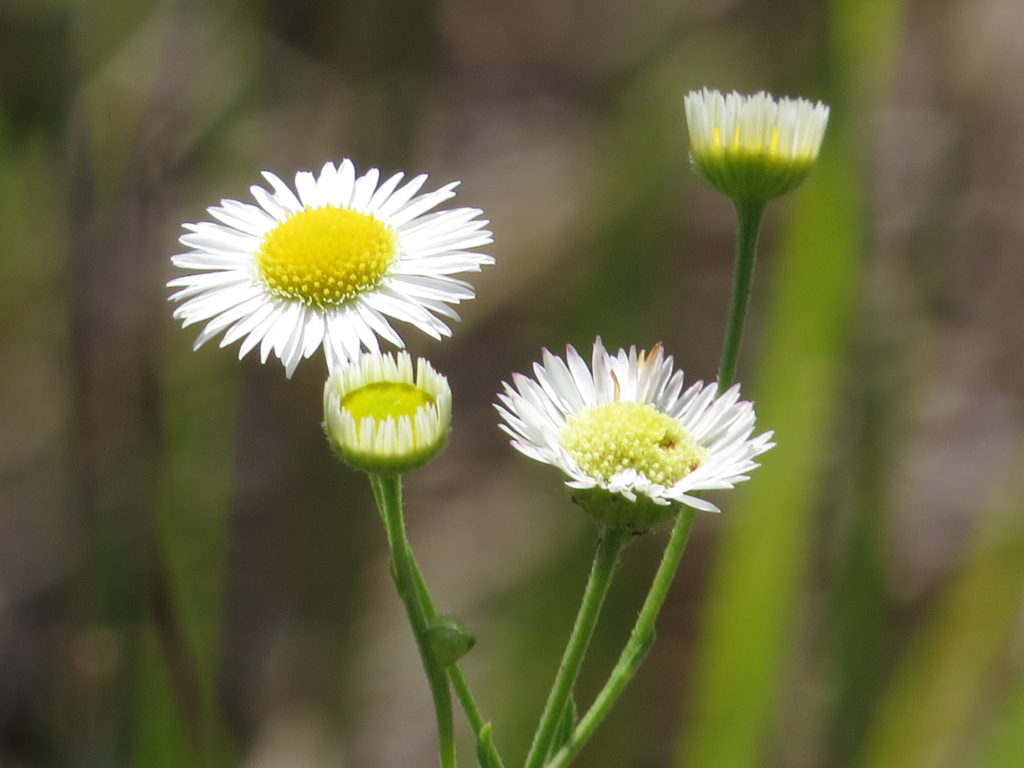
Once grown as a hay crop, this escaped plant now grows ‘wild.’ White Sweet Clover, along with its sister Yellow Sweet Clover, is a major source of nectar for the Honeybee to make honey. The genus name, Melilotus, is Greek for ‘honey.’ Can you see the bee?
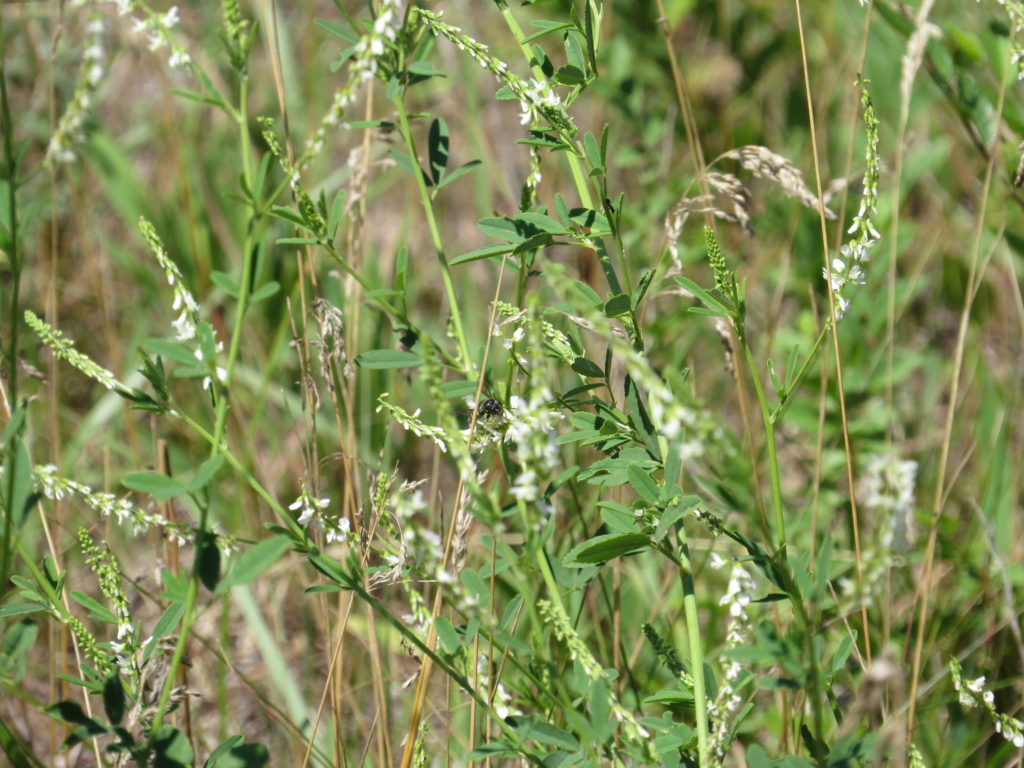
A member of the Mustard family, Hoary Alyssum is an inconspicuous white-blooming wildflower common on the prairie. It pairs well with Hairy False Goldenaster—both are covered in downy white hairs (thus their names.)
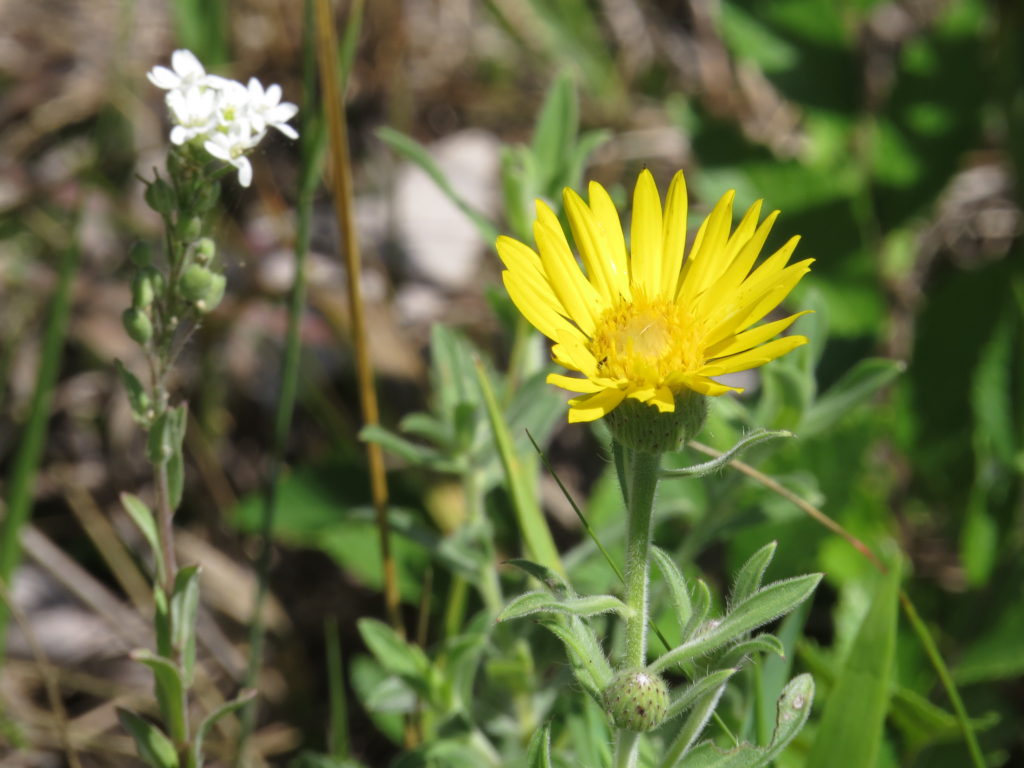
June and July on my little prairie with grasses, wildflowers, silver sages, and pollinators! It is a diverse, ever-changing ecosystem full of tough, unique, and beautiful plants.
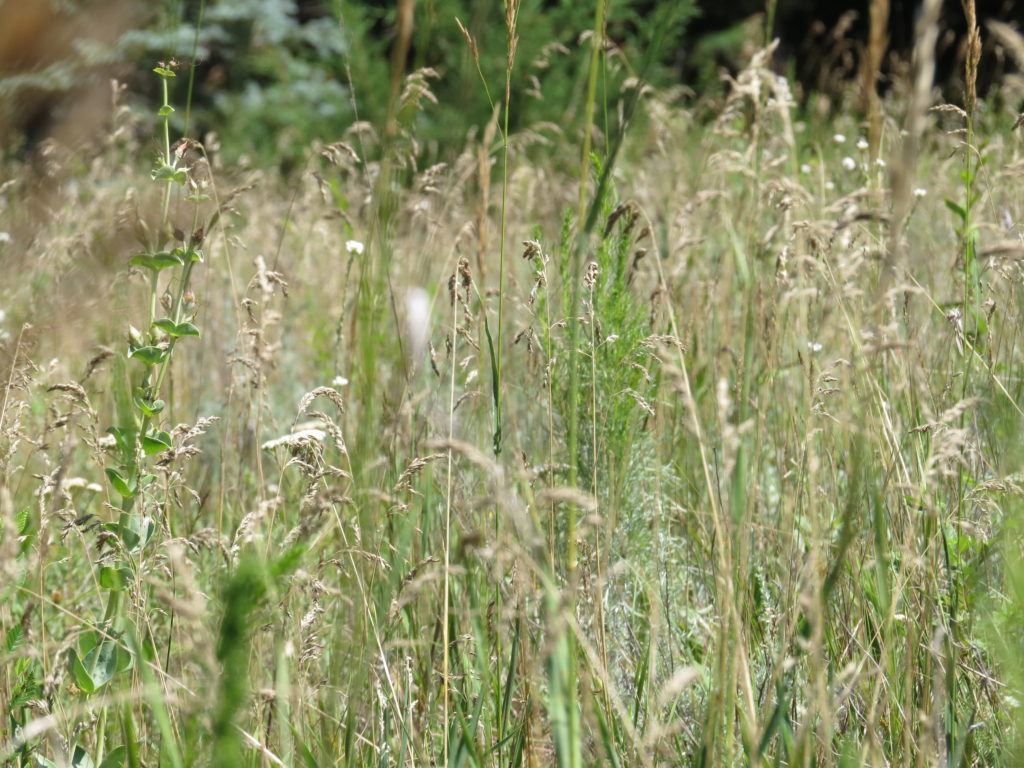
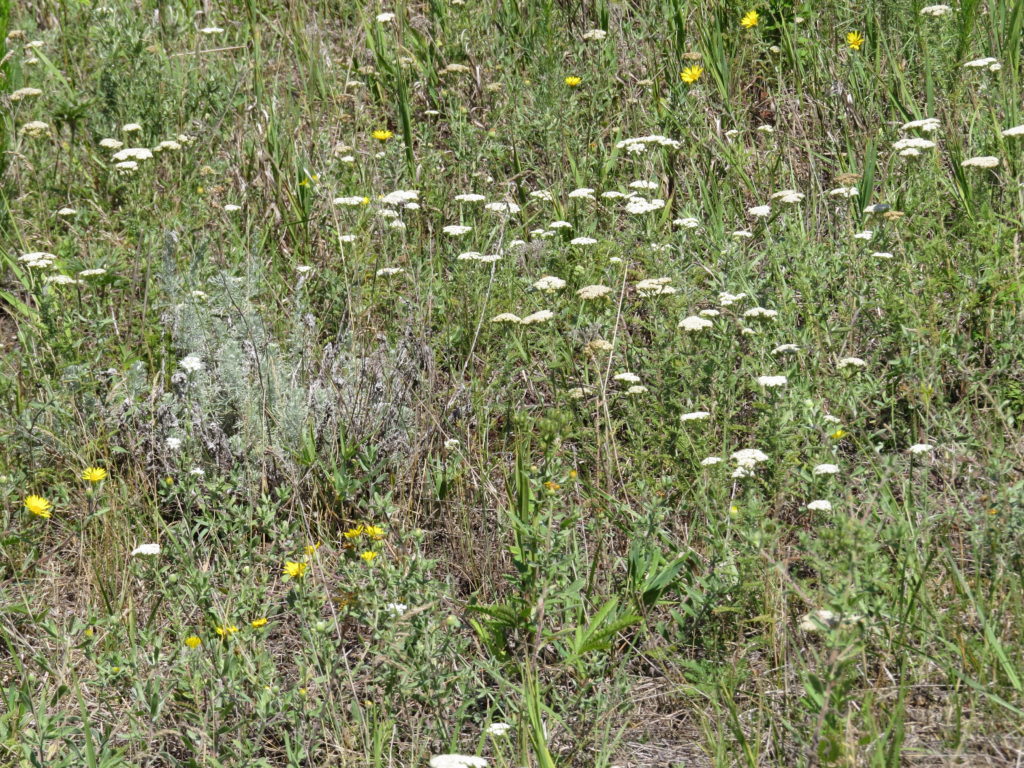
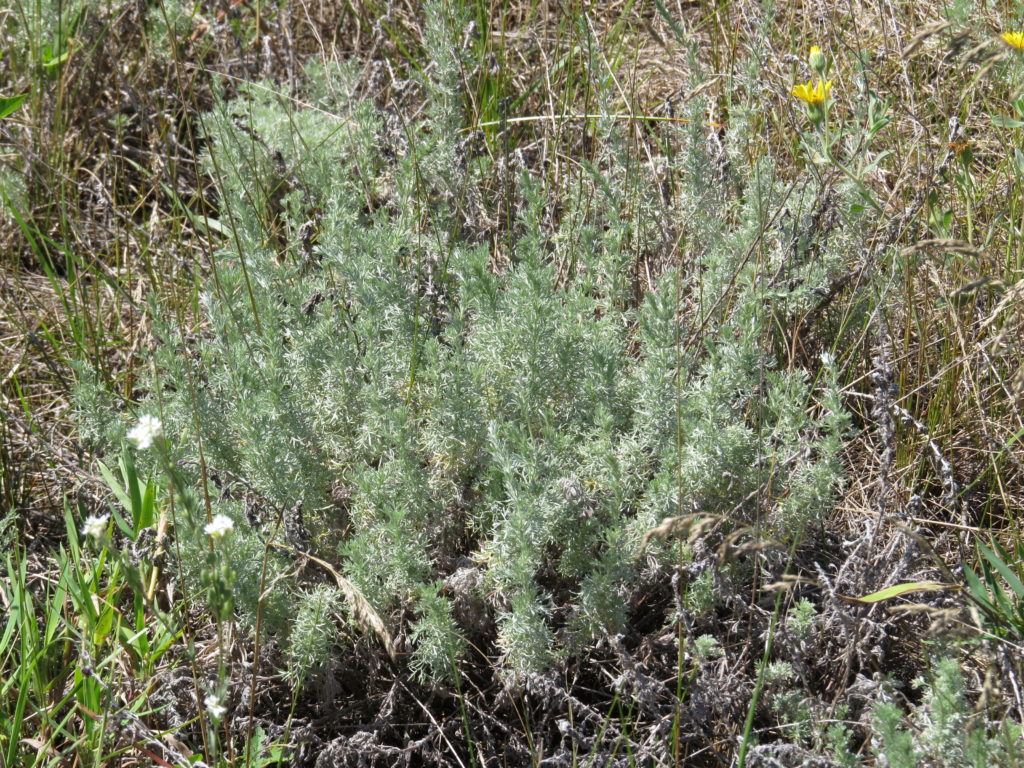
Prairie plants and their busy pollinators, in their quiet and unassuming way, remind me of all the front-line workers of this pandemic we are living through. The nurses, EMTs, police and fire workers, housekeepers, RTs, caretakers, doctors, funeral workers, grocery store workers, and all the other workers who risk their lives in order to take care of our needs. They do their work without fanfare and so often go unnoticed and under-appreciated. They are tough—they wear their masks all day long to keep the rest of us as safe as possible. Their work is hard, and it’s important. A thousand thanks to the tough, unique, and beautiful people on the front lines of this pandemic. You are the shining stars.
Leave a Reply